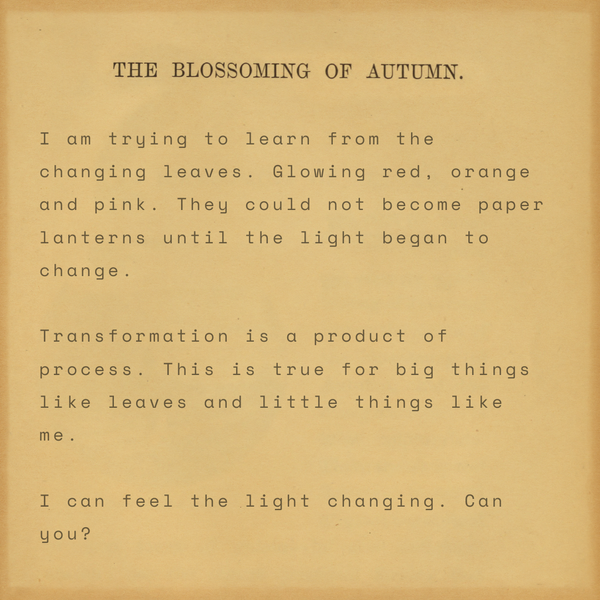One of Walgreens biggest stockholders commissioned Fearless Girl
None of us are fearless girls because they'll keep funding things built to make us afraid.
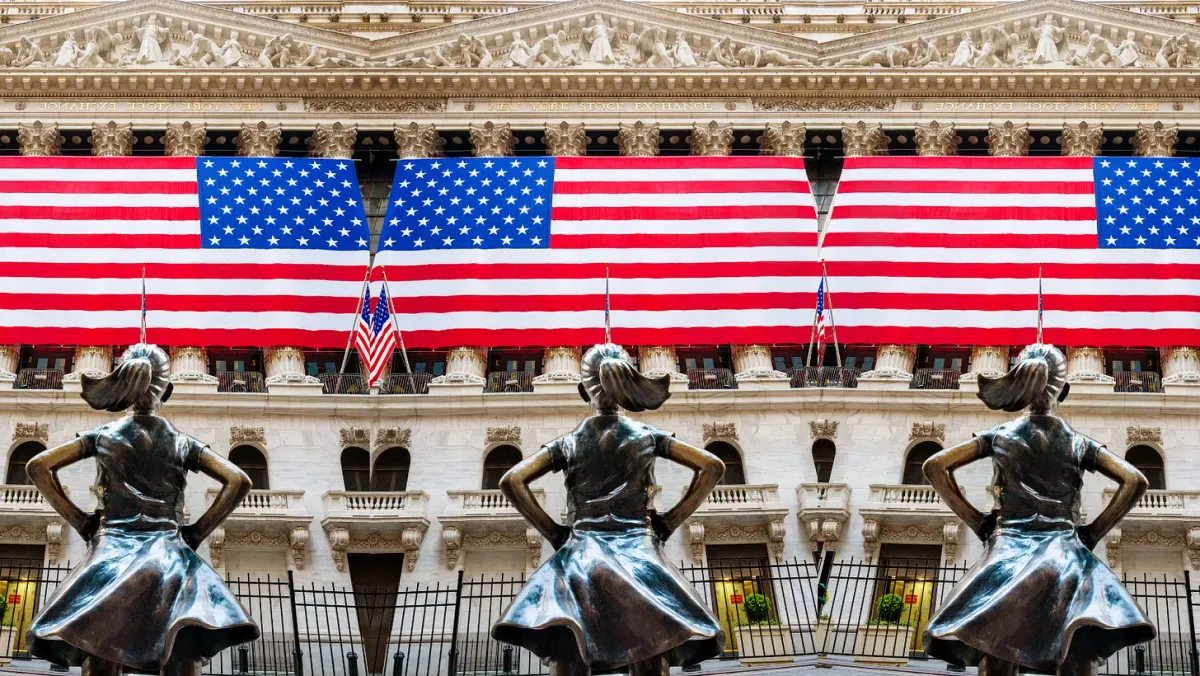
Sometimes, while researching a story, I learn something so anger-making that I know I won’t be able to capture how I feel in an essay. It’s the kind of righteous rage that needs twang and steel guitar. I can’t write music. So, I do my best with what I know how to do. Still, as I wrote this newsletter about Fearless Girl and so much of the media dropping the ball on the Walgreens story, I knew I would fall short of the beat of my heart. This should have been a country song.
In January, the FDA slightly expanded access to mifepristone, one of the two drugs used in miscarriage and early abortion treatments. And I do mean early. In the US, doctors will only prescribe a medication abortion up to 11 weeks after the first day of your last period. As I’ve written in the past,
“in high-income countries, when detection of pregnancies and access to abortion pills exist together, up to 97% of abortions occur before nine weeks after the first day of the last period.”
The FDA’s decision moved America closer to being one of many countries where almost all abortions happen during the embryonic stage of pregnancy.
The decision meant that once a pharmacy became licensed to dispense the drug, they could provide it through the mail and in their stores. Customers would still need prescriptions for each medication. Walgreens and CVS announced they would seek licensing to expand their customers’ access to this necessary care. I am sure those press releases gave both companies warm fuzzy feelings. They were on the right side of history. Well, for that news cycle.
Of course, you’ve heard by now that Walgreens has now decided to withhold that medication from customers in 21 states, including four states where the pill is legal. The decision came after Republican attorney generals in those states threatened the company with legal action if Walgreens filled prescriptions for the medication.
Over the past few days, Walgreens has put out statements about a commitment to dispense the pills where they are legal and “operationally feasible.” Which, taken together, means absolutely nothing. It does not address the four states where they’d already assured AGs they would not sell the pills despite the fact they are legal. It’s almost like it’s terrible to leave access to healthcare up to the whims of corporations?
Mifepristone doesn’t cause the abortion. Mifepristone simply makes the abortion less grueling.
I want to scream at most of the media covering this. Or maybe strum a guitar furiously in their direction. Yesterday, I read story after story reporting that “the abortion pill” was being pulled from Walgreens in 21 states. What the stories failed to mention is the standard of early abortion care in America is a two-drug protocol. Mifepristone doesn’t cause the abortion. Mifepristone simply makes the abortion less grueling by helping tissue detach from the lining of the uterus. It’s the second medication, misoprostol, that facilitates the abortion. Misoprostol is used for things outside of medicated abortion and is not being banned. Why wouldn’t every single story about this include that detail?
Misoprostol expels the tissues from the uterus by causing uterine contractions. Medicated abortions can occur with misoprostol alone. And in lots of the world where mifepristone is hard to come by, that’s precisely what happens. Less than 12 weeks after the first day of the patient’s period, the World Health Organization suggests 800 mg of Misoprostol dissolved under the tongue.
Misoprostol-induced abortions are incredibly safe and very effective in the early stages of pregnancy. But they hurt a lot worse. Without the help of mifepristone, misoprostol-induced contractions have to do more work, detaching the tissues and pushing them out.
Walgreens withholding mifepristone from women increases the pain they’ll experience. Women who have medicated abortions using only misoprostol report more vomiting, sometimes to the point of blood vessels bursting in their faces and eyes. But they are still able to have safe abortions. That means that the pain is the point. That pain is induced by a two-step protocol of Republicans and Walgreens executives. That induced pain should be included in every single reported piece. When it’s not, every reader should ask the journalist why they left it out.
Can I tell you what else so many stories seem to be missing? And here, please imagine me starting to sing with a lilt and twang, the kind that cuts.
When I think of Walgreens, I think of the one I could walk to from my home in Oakland. It was understaffed and undersupplied. I couldn’t always find what I needed there. Years before the pandemic, its shelves were empty a lot of the time. But it was close and close matters when you’re worried about a sick kid. My kids were all very small then. One of them was always fevering or coughing. I spent so much of my early motherhood pacing that Walgreens’ aisles - buying pain relievers, fever reducers, expectorants.
There were never enough people working behind the pharmacy counter. I brought a book while waiting in line to pick up antibiotics, ear drops, eye drops, and ointments. Even when I walked out with the medicine I needed, the transaction felt incidental. Like Walgreens happened to have medicine but didn’t exist to dispense medicine. I was right.
Walgreens can afford to be taken to court by a few attorney generals. In 2014, Walgreens bought Boots Alliance and became Walgreens Boots Alliance, a British American and Swiss enterprise. WBA owns Walgreens and Boots - the UK beauty retailer and pharmacy. With locations across nine countries, WBA claims to be “the largest retail health, pharmacy, and daily living destination across the U.S. and Europe.”
In 2022 alone, the conglomerate had sales north of $132 billion. They can handle the lawyer fees. It’s not about the threatened legal action. It’s about the stock. The WBA price will dip if a few states take the company to court. Walgreens doesn’t exist to sell pain relievers or healing serums. It exists to enrich its shareholders.
Can you hear that steel guitar? Good. Let’s keep going.
Would you like to know who the second largest stockholder of WBA stock is? SSgA Funds Management, a subsidiary of State Street Global Advisors, one of the largest asset managers in the world. If you are an institution - a government or university with a large endowment - you invest with SSgA. SSgA prides itself on its activist funds. In 2022, for example, they announced two Paris Climate Accord-aligned funds for investors who wanted to “decarbonize their portfolios.” The investment arm of the University of California education system was one of the early-stage investors.
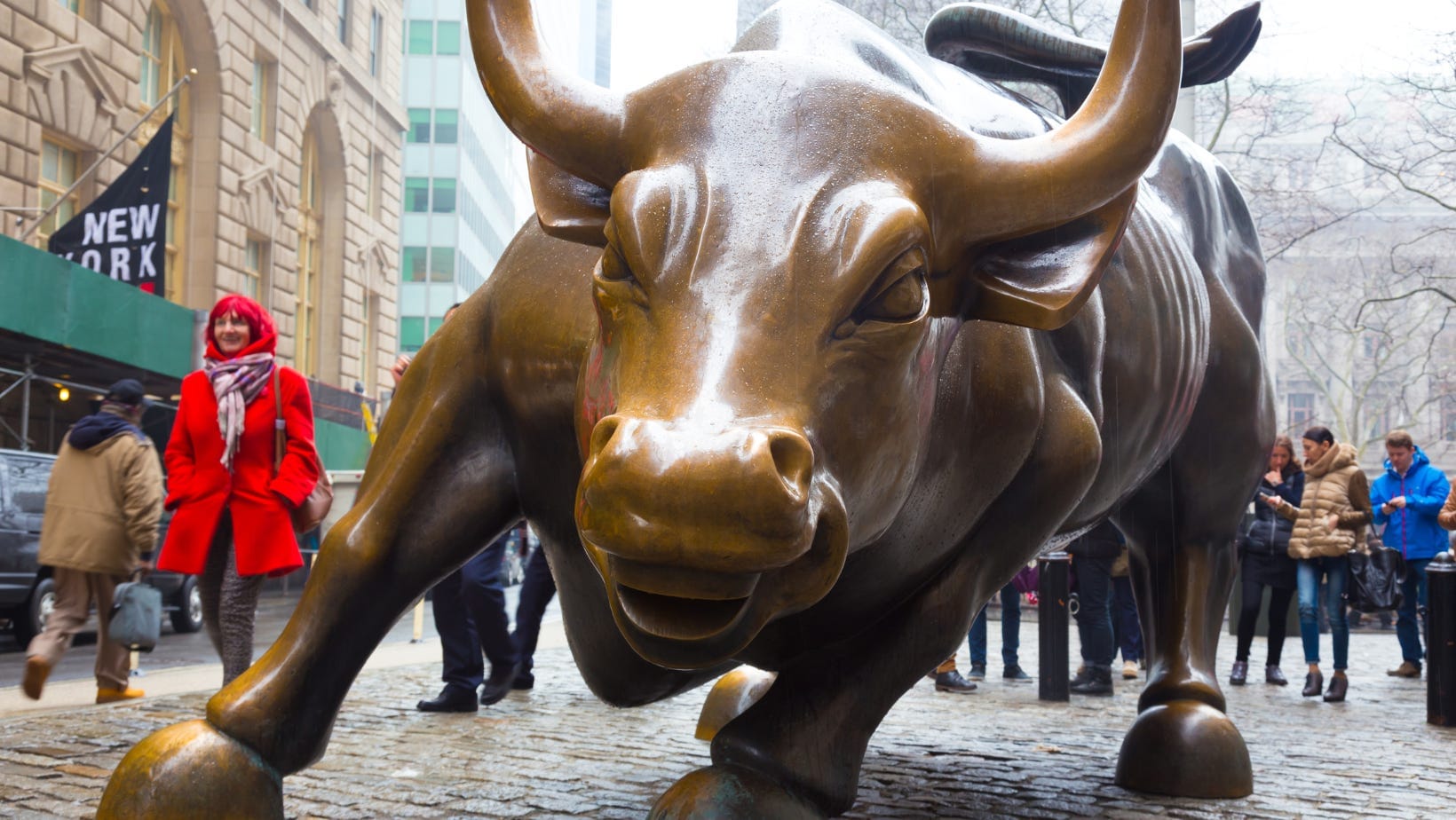
They also have a fund full of companies with higher-than-average numbers of women in leadership positions. You probably haven’t heard of that fund. But you have heard of one of its biggest marketing stunts. SSgA commissioned Fearless Girl, the statue of a little girl standing opposite the Wall Street Charging Bull, to advertise what they call their Gender Diversity Index. Yes, they put that little girl in front of that raging beast as a symbol of "gender diversity in corporate leadership.” When I saw the photos of the installation, my first instinct was to put myself between her and that damn animal.
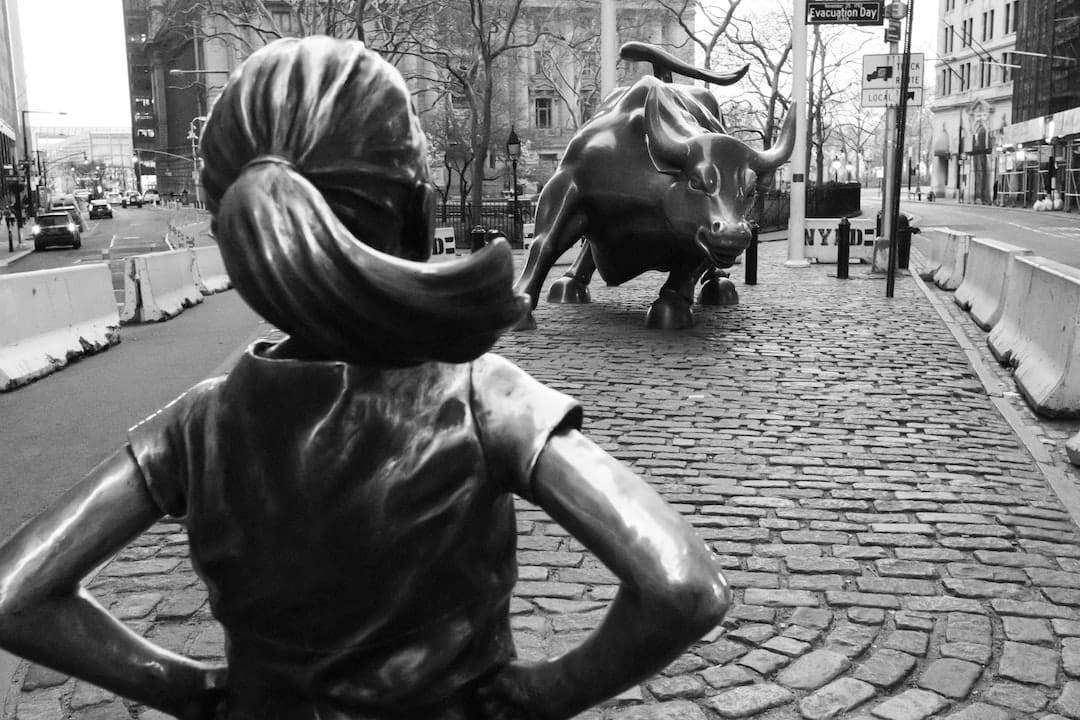
In 2017, Christine Emba wrote a great piece about the statue,
“Were there no adult women around to model leadership? Real-life fearless females have stepped forward around the world, displaying strength, determination and calm in the face of male dominance and aggression. But instead, the ‘Fearless Girl’ statue portrays the empowered woman as a child, reinforcing the idea of femaleness as cute and inoffensive — a child with potential, maybe, but not all the way there. Maybe that’s why passersby have found it so easy to disrespect the piece: Whether it’s the Wall Street bro photographed humping the statue just a few nights after it appeared or the ‘patriotic’ wags who draped it in ‘make America great again’ gear, a harmless little girl is still all too easy to disregard.”
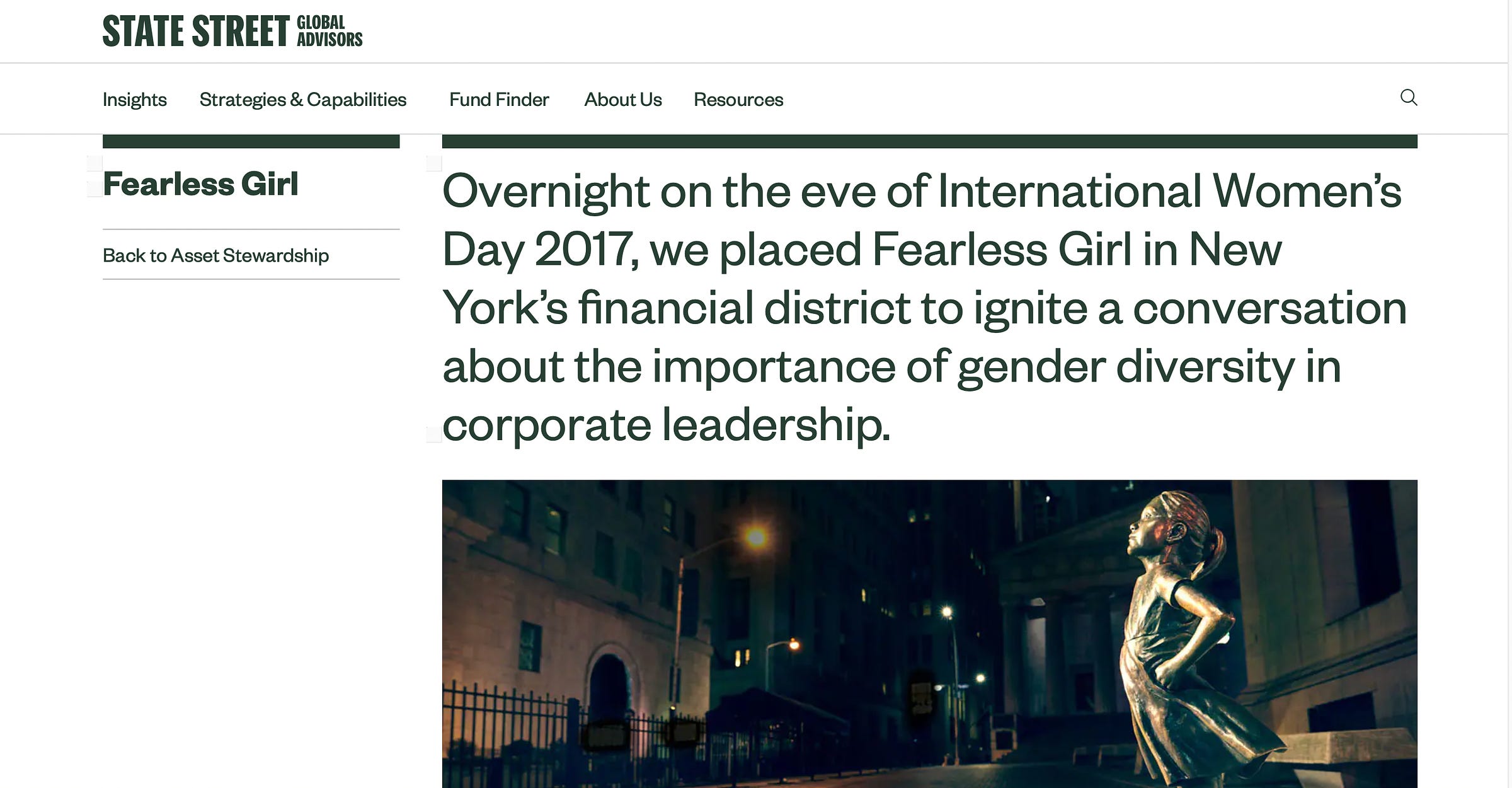
The Fearless Girl statue now stands opposite the New York Stock Exchange. SSgA’s investment in corporations that will choose pain for women over lost profit every single time makes that little girl’s placement even more poignant. Does SSgA have a fund divested of violence against women? Or would that be too difficult to build? Okay. What about a fund that is divested of companies that would restrict a woman’s right to her prescribed abortion medicine?
Does SSgA have a fund divested of violence against women? Or would that be too difficult to build?
When Fearless Girl was first placed, there was a plaque at her feet. It read, “Know the power of women in leadership. SHE makes a difference.” The joke here is that SHE is the stock symbol for the fund SSgA was marketing. And they’re right. The way people invest does make a difference. We can see it in Walgreens’ decision to let the charging bull run through every woman in America. None of us are fearless girls because SSgA and others like them will keep funding the things built to make us afraid.
One last lilt. One last strum. And the song ends.
California is divesting from Walgreens. I will never shop there again. I am not safe there. I hope you boycott it, too. And if you live in one of the other eight countries where Walgreens Boots Alliance has a presence, I hope you join your American sisters in the boycott.



